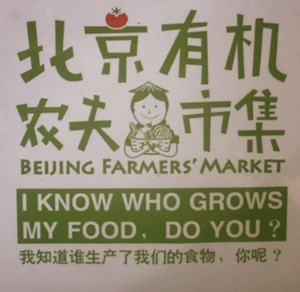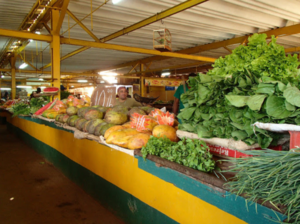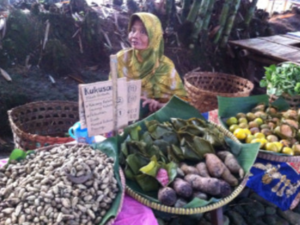Supermarket watch Asia bulletin, Issue 4, November 2016
Editorial: Connecting smallholders to markets
In 2014, the Committee on World Food Security (CFS) established a special work area or “work-stream” on Connecting Smallholders to Markets with the aim of exploring the relationships between markets, food security and smallholder agriculture. Organisations of small-scale food producers in the CFS’s Civil Society Mechanism (CSM) decided to participate in this work-stream because it offered an opportunity to recognise the contributions of small-scale food producers to global food security and nutrition.
Although most smallholders worldwide are connected to some type of market, there are significant gaps in information and in policymakers’ understanding of the types of markets in which smallholders are active; the kinds of markets that are remunerative for them; and the terms upon which they negotiate access to markets.
The needs of small-scale food producers have long been misunderstood and discriminated against in public policy making. CSM members saw this work-stream as a way to build on past work done in the CFS on Investing in Smallholder Agriculture, with an emphasis on recognising the types of markets that are favourable to small-scale food producers and identifying the kinds of regulations and standards needed to protect them from predatory and destructive markets. Activities in this work-stream have included several rounds of formal and informal consultations, including a High-Level Forum held in June 2015. Negotiations on the final outcome document were adopted by the CFS on 8-9 June 2016.
The two-year process yielded an impressive body of information and analysis on the markets in which small-scale producers are active; the markets that channel most of the food consumed in the world; the kinds of investment and public policies needed to strengthen relations between small-scale producers, markets and food security; and so on. An especially significant contribution from CSM members to this process was the identification of “territorial markets” as the key markets in which the majority of smallholders are active.
Territorial markets are situated in and identified with specific areas; are rarely purely informal or local; and channel most of the food consumed in the world. They meet varied food demands in diverse locations and involve many actors within the territory, such as processors, traders and transporters. In these markets, women have key leadership roles—which has positive, spill-over effects on their social status in families and communities.
Using the outcome of the Connecting Smallholders to Markets process as the key reference, CSM members released an analytical guide in October 2016 showing how small-scale food producers, their organisations and allied civil society groups can use the outcomes in their advocacy work at different levels.
The full document can be found at: http://www.csm4cfs.org/
Article by Shalmali Guttal,
executive director, Focus on the Global South
Email: [email protected]
Pasar Papringan, reviving village economy and ecology
Behind the beauty and peace of village life, there are often many problems that hinder a village’s potential. That is why Singgih Susilo Kartono initiated Papringan market (Pasar Papringan) in Dusun Kelingan, Caruban Village, Temanggung, Central Java. “The role of the village in building sustainable living is very significant now and in the future”, said Singgih.
Singgih, who is also the founder of Spedagi, a bamboo-based bicycle, launched Pasar Papringan after reflecting on how to create added value while protecting the bamboo forest where he sources his bicycle materials. Together with others in the village, he set up the market for local agricultural products and handicrafts produced in the bamboo forest without destroying the forest itself.
Pasar Papringan is located in the empty spaces inside the bamboo forest. Started on 10 January 2016, the market is open every 35 days on “Sunday Wage” (market day on the Javanese calendar). The rest of the time, the market location is used as a public space for other activities. Singgih hopes that by reviving the space inside the bamboo forest, villagers will see the forest as convenient space for daily activities.
“This market is quite unique and provides an alternative for community income generation. Almost all the traders are local villagers, who sell local and healthy culinary products, handicrafts, coffee and local farm produce. You can even find a bamboo-based bike here, and no plastic bags”, said Francisca Callista, a graduate from Chiba University, Japan, who now helps run the market. Francisca explains that one of the unique aspects of this market is that it uses its own currency made from bamboo. This is as an effort to integrate efforts to revitalize the village landscape and agriculture. Besides the market activities, occasionally Papringan market also host public discussion on topics that related to the villagers, such as discussion on village revitalisation and agriculture development by Indonesia Institute of Agroecology (INAGRI) during the last market day.
As the market becomes known, it is beginning to attract consumers from surrounding districts and provinces. The revenue from the 8th market day of Pasar Papringan reached almost US$2,000. Through this market, village resources are not taken away from the village, but rather produced, managed and consumed inside the village and enjoyed by the villagers.
Article by Achmad Yakub
Bina Desa activist
Email: [email protected]

When it was established in 2010, the Beijing Farmers’ Market was a small market, but after only five years, it has become a benchmark of the community supported agriculture (CSA) movement in China. Today, the organisation hosts between eight and ten markets each month at various locations throughout the city, with vendors from 40 small and medium ecological farms in the Beijing area and roughly ten small-scale, handmade craft studios. With a large number of consumers, yearly direct sales have reached between 1.5 and 2 million RMB, with indirect sales even higher.
Producers who join the Farmer’s Market widen their markets by enabling their ecologically sound and healthy products to be sold at a good price, which in turn improves their own management situation. The Farmers’ Market has successfully set up an alternative space for small- and medium-scale ecological agriculture and traditional food culture within Beijing’s large-scale food distribution system based on direct interaction and trust between producers and consumers.
The market does not have a fixed location. Rather, it changes for every session and advertises just a few days in advance through Facebook and Weibo, China’s equivalent to Twitter. Many people now depend on the Beijing Farmers’ Market for their weekly grocery shopping according to one of the market’s founders, Chang Tianle. The market attracts 2,000 consumers on average over a four-hour session, reflecting a growing passion for healthy and safe produce in a country known for its environmental and food safety failings.
The market does not interfere with farmers’ prices. But given the fact that farmers have varying production levels and natural resource conditions, it can be difficult for consumers to determine the value of different farmers’ goods (both the value as goods and the environmental value). This means that, in the past, the market saw quite a bit of price distortion—i.e. the things that sold for the highest price were not necessarily the items with the highest value, but were instead the items that looked the nicest or that had the best marketing.
In early October, the market began posting information about that farm at each vendor’s table such as farms’ ecological practices and new prices gradually fell into place. When consumers can more accurately compare different farms, the farms have more power. This also gives them a clearer idea of how they can improve and begin searching for better practices. The access to this information is thus beneficial for both sides.
The urban and rural connection is at the heart of Beijing Farmers’ Market movement, and it is an important aspect. Because local markets like these where producers and consumers can meet directly, are really a community service and not merely business and need to be recognised for that role.
Article adapted by GRAIN from: “The Path to PGS in a Common Farmers’ Market” by Jiang Yifan (2016) and “Beijing market’s forces” by Tom Mitchell (Financial Times, 2013).
Contact:
Chang Tianle,
convener of the Beijing Farmers’ Market.
E-mail: [email protected]

